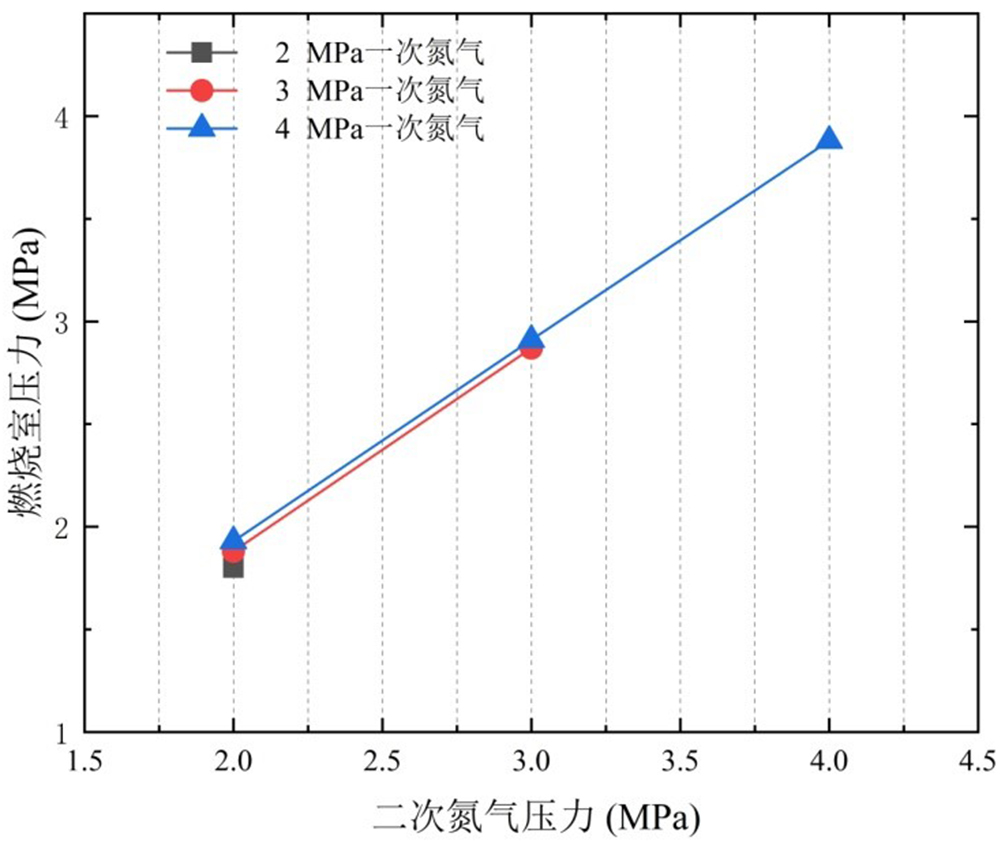
根据实验测量实验室压力值,建立一次、二次氮气压力与燃烧室压力的关系,如图所示。从点线图中的斜率可以看出,二次氮气压力对燃烧室内部压力影响非常显著。在一次氮气压力不变的情况下,燃烧室内部压力趋近于二次氮气压力,这也证实了3.6.3节中的模拟结果。在二次氮气压力不变的情况下,通过提高一次氮气压力,可以使燃烧室内部压力小幅度提升。这是由于一次氮气从双气流雾化喷嘴射出,该结构中的一次氮气入口口径较小,由此注入的氮气流量也相对较小。此外,一次氮气压力不能小于二次注氮压力,否则会导致一次氮气入口处焰流反吸的现象,这对设备的损伤是非常严重的。
Based on the experimentally measured laboratory pressure values, the relationship between the primary and secondary nitrogen pressures and the combustion chamber pressure was established as shown in Figure 1. From the slope in the dotted line plot, it can be seen that the secondary nitrogen pressure has a significant effect on the internal pressure of the combustion chamber. With constant primary nitrogen pressure, the internal pressure of the combustion chamber tends to be similar to the secondary nitrogen pressure, which also confirms the simulation results in section 3.6.3. A small increase in internal combustion chamber pressure can be achieved by increasing the primary nitrous pressure with constant secondary nitrous pressure. This is due to the fact that the primary nitrogen is injected from the dual airflow atomization nozzle, which has a small primary nitrogen inlet diameter in this configuration, and the resulting injected nitrogen flow rate is relatively small. In addition, the primary nitrogen pressure should not be less than the secondary nitrogen injection pressure, otherwise it will lead to the phenomenon of flame flow back-absorption at the primary nitrogen inlet, which is very serious damage to the equipment.